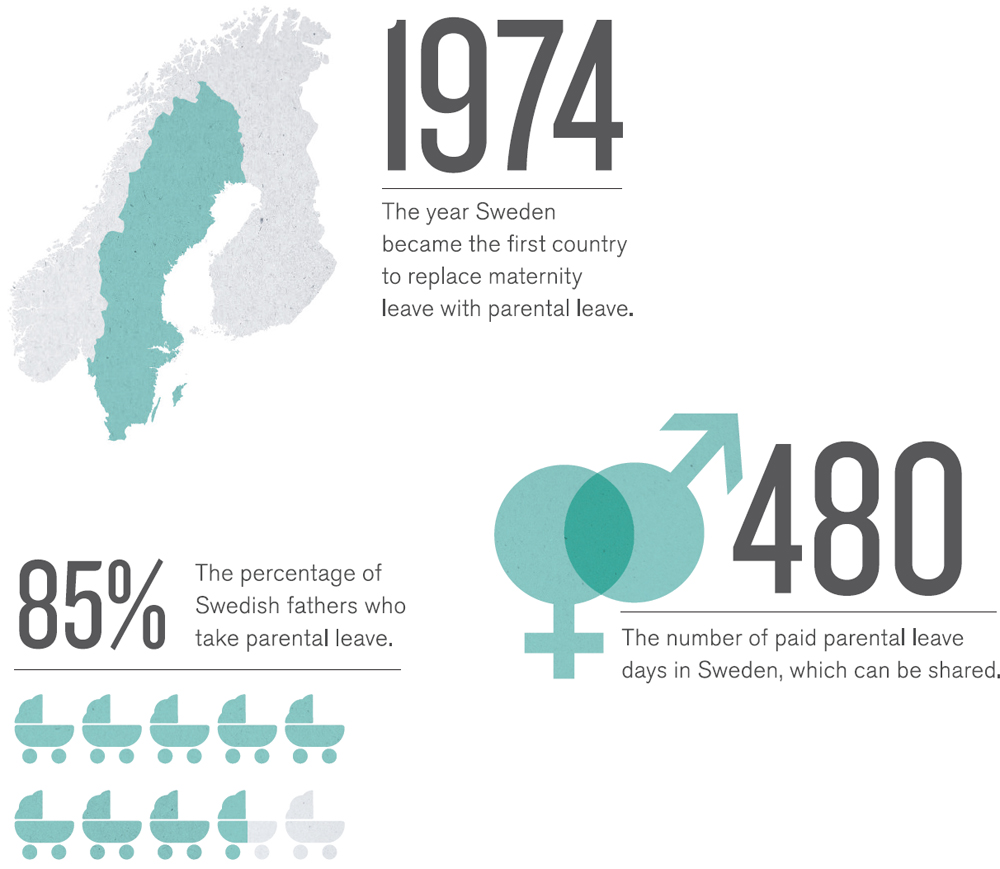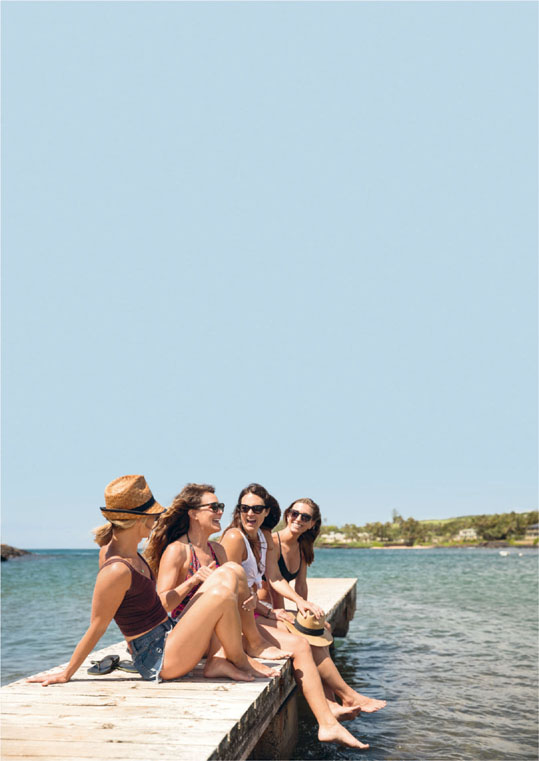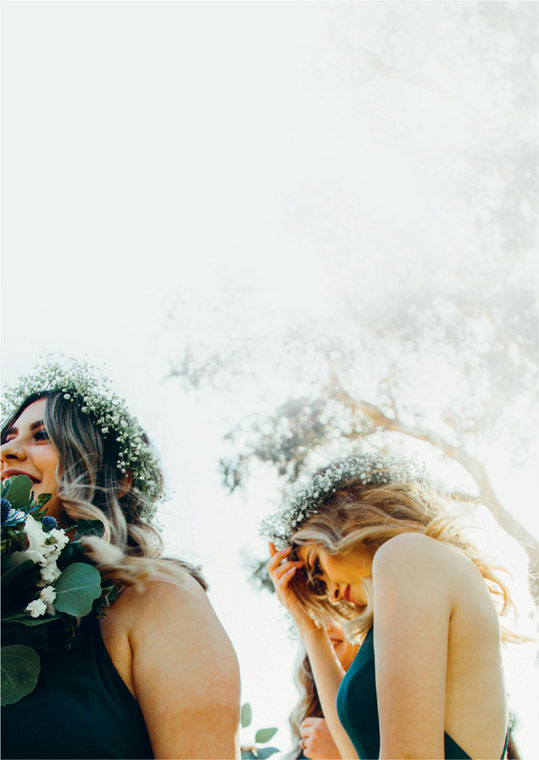
The lagom guide to relationships

It seems strange to begin a chapter about relationships talking about independence, but I’ve realized it’s fundamental to understanding a Swedish relationship. You see, independence is pivotal in Swedish society. The entire system is designed so that people can fend for themselves: heavily subsidized day-care centres, for example, mean that once parental leave is over everyone can and is expected to work (unless physically or mentally incapable) and contribute to household income. And, from there, a truly balanced and healthy relationship is born.
I’ve learnt that taking equal responsibility for all aspects of life plays an essential role in Swedish relationships. Whether it’s working, dividing up household chores, childcare, initiating sex or simply giving the other person space to enjoy some all-important me time – doing your bit is the key to finding balance.

Maskot/Getty Images
Being together – but not too together
Being a fairly liberal country, Sweden is known for its relaxed attitude towards sex and relationships (Sweden legalized same-sex marriage in 2009, the seventh country in the world to do so). And in a culture that highly values independence, it’s perfectly acceptable to live together or apart and never get married. In fact, they’ve even devised words for these options. For example, särbo is used to describe your partner when you’re in a relationship but live separately, and sambo is a partner you live with but aren’t married to. It’s not uncommon for couples to be together for 40 years or more and never get married.
Regardless of type, there is one vital factor that binds Swedish relationships, generally, and it ties in with the lagom philosophy: it’s centred on kindness, respect and working together as a team – in all aspects!
Relationship equality
It’s little wonder that Sweden is known for being the most progressive country in the world in terms of gender equality: it’s something everyone in the country has strived for and feels immensely proud of, although they will tell you there’s still more work to be done. I’ve learnt that it makes sense for both people in a relationship to take equal responsibility for income, household chores, raising the children and just about every other area in their joined lives. If these tasks are divided effectively and each partner trusts the other to get on with it, it leads to an even-handed relationship, in which everyone has a lagom amount to do and both can enjoy a balanced way of life. Hurrah!

A few years back, I found myself in a situation in which I needed to sew some fabric together (surprisingly rare!). I borrowed a sewing machine and tentatively got to work. A few minutes later my husband appeared, asked me what needed to be done and sat at the machine. Within a few minutes he had knocked out two beautiful cushion covers. I stood there astonished. ‘We learnt at school,’ he shrugged.
One of the key points here, though, is that from childhood Swedes are taught that household chores should be divided up according to preference, not gender. Someone who’s a bit of a whizz at cooking and finds it relaxing, for example, might prefer to take on more in the kitchen. Others might love to wander around the supermarket or do the laundry (there must be someone out there who enjoys it!). And if no one raises their hand then you simply take turns.
Time to do what you love
Dividing up responsibilities with your partner is a great way to find more balance in your life and free up time for doing what you love – together and apart. In a nation where independence is cherished, creating time for and encouraging activities like meeting a friend, doing a project you’re passionate about, going to the gym or taking up a new hobby separate from your other half is said to be key to maintaining a healthy and balanced lagom relationship.
‘Love me when I least deserve it, because this is when I need it the most.’ Swedish proverb

Looking for the key to a long, happy relationship? Leading relationship experts say kindness and generosity towards one another is the secret.4 As with all things lagom, they don’t need to be grand gestures – small, thoughtful actions that don’t require a lot of effort can often go a long way and put a smile on your loved one’s face! My husband, for example, is always doing little things like bringing me coffee in bed in the morning, stocking the fridge with my favourite chocolate and sending thoughtful texts. Nothing grand, just simple things, which make my day that little bit brighter!
Five small things to do for your partner to show you care
+ Ask: ‘Is there anything I can do for you today?’
+ Leave a personal note in the book they’re reading to make them smile.
+ Surprise them with coffee or tea in bed on a regular day.
+ Pick up one of their favourite treats on your way home.
+ Mend their bicycle without being asked.
When it comes to the bedroom, Swedes are known for their liberal attitude. My Swedish husband still jokes about the time he came to my parents’ house when we were both in our twenties, and we had to sleep in separate bedrooms! Parents in Sweden are, in general, much more relaxed, taking pains to talk to their children about safe sex and respecting that if something’s going to happen, it’s better that it happens under the safety of their roof (as long as they are of legal age) rather than behind their backs. How refreshing!
PLAN A WEDDING LIKE A SWEDE
Having moved to Sweden in my mid-twenties, our first few summers were a blur of hen and stag dos and weddings – on both sides of the North Sea.
While all were great fun and truly memorable in their own way, I observed that while English hen and stag dos tended to be slightly more lavish affairs (often involving flights and hotels), the Swedish equivalent was more about coming up with creative ways to have fun – often on your own doorstep. This extended to the big day itself, with Swedish weddings usually fairly relaxed affairs, where the guests do their fair share of making the day memorable (and I’m not just talking about going for it on the dance floor!).
All in all, in Sweden the big day is about finding a balance – ensuring that costs are kept down for all involved and the focus is on being together.
The Swedish hen and stag do
Forget Ibiza drink-fests or luxurious spa weekends. In Sweden, hen and stag dos are simply about creating a truly personal, memorable event and helping friends and relatives get to know each other before the big day. Traditionally, the maid of honour or best man organizes it without the bride or groom’s knowledge (they’re sprung upon in the morning). This means the bride and groom are in a state of nervous anticipation because they know a hen or stag do is inevitable but aren’t quite sure when it will be! In the months before the wedding, the group gets together to plan a day (or occasionally a weekend) of activities, from a picnic to scavenger hunts and dance sessions or going out on a boat. In fact, the more creative and out there, the more memorable it is! It’s rarely an expensive affair, which makes it all the more inclusive and fun. And, in my experience, the personal touches make for some wonderful memories for years to come.
How to plan a Swedish-style hen or stag do
Set the date Contact the other half to set a date when the person is available (without that person’s knowledge, of course). The partner is then responsible for keeping that day or weekend free (it might require some double bluffing), providing a list of people who should be invited and packing a bag when the day arrives.
The brainstorm It’s customary for the group to brainstorm ideas secretly. This is one of the most fun parts and a great way to get the group together. The activity suggestions usually vary from pleasant (a picnic in the park, bonding in the sauna or enjoying an activity out in nature) to crazy (writing a song and performing it on the street to collect money for your outfit for the big day).
Set and stick to a budget The budget is also a part of the wider group discussion. It’s important that everyone feels comfortable with the cost and no one is excluded. After all, it’s about gathering all the people who are special to the bride or groom for some pre-wedding fun. Ensure that the finances are arranged beforehand and keep within budget to make sure no one is out of pocket.
Divide up the tasks Once the activities have been determined, the responsibilities are divided up among the group. One person may take on the role of creating a playlist, another a game, and another may make the dinner reservation or prepare a picnic. The key is to ensure that no one has too much to organize. It’s very much a team effort.
The kidnap The way you surprise your protagonist sets the tone. Timing and style are crucial! More often than not, the group will appear at the door or even at the end of the bed. In my experience, the bridal party usually opts for a kinder approach, but stag dos are known for the many eventful ways in which they kidnap the groom. Sometimes they even indulge in a fake kidnap, such as asking the groom to be somewhere dressed as a rabbit, only for him to wait hours before eventually returning home. The real stag do is usually a few weeks later, during which time the ‘stags’ have had enough laughs to last a lifetime. Cruel? Possibly. But if it’s done the right way for the person you’re celebrating, it can be great fun for everyone involved.

Jordan Siemens/Getty Images
In my experience, Swedish weddings are rarely lavish. In fact, they’re often beautifully simple yet truly personal. The big day is often a budget-friendly affair, smaller than the average wedding, and, as with many Swedish gatherings, the emphasis is on getting together and having fun.
This is particularly apt in this day and age when the cost of weddings is soaring in many countries – the average US wedding budget is estimated to have increased by $5,500 over the past five years,5 reaching a total average cost of $30,000 – and that’s before factoring in the honeymoon! The stress of organizing such a large event steals the focus from the marriage itself and will no doubt mean you’ll begin married life in debt. In fact, a study by Emory University in Atlanta, Georgia, revealed that the more you spend on your wedding, the less time your union will last!6
The study found that splashing out $30,000 on your big day was found to increase the odds of divorce by 250 per cent, compared to those who spend between $5,000 and $10,000. Interestingly, spending less than $1,000 gives you the best odds for a long marriage.
If this revelation isn’t enough to make us want to scale back on our spending, I don’t know what will be! If you’re planning a wedding, here are a few ways to rein things in, give yourself the best chance of a happy wedding day and set yourself up for an even happier marriage.
A little help from your friends
People love to be involved in helping you prepare for your big day. Among your guests, there’s likely to be one or more people who have a special skill or something they could contribute. Politely ask them if they’d like to be involved – but do ensure they can relax and enjoy the wedding, too!
Search your wedding-invite list and see if you know:
+ a singer
+ a photographer
+ a hairdresser
+ a makeup artist
+ someone who is good at flower arranging or some other decorative skill

Omar Lopez/Unsplash
I’ve been to many Swedish weddings where guests have helped out with the photography. Often this results in wonderfully relaxed and informal snapshots of the day – all very lagom. It’s a little too much to ask your photographer friend to work at your wedding free of charge, but you might find an introverted guest with a natural interest in photography who would be more than happy to hide behind a camera now and then. Likewise, with all your guests armed and ready with compact cameras and phones, it’ll be easy to create an album afterwards.
The rustic venue
Often it’s the venue that costs an arm and a leg. In Sweden, people are permitted to get married anywhere they like, which gives rise to the most beautiful settings – by a lake, in a forest clearing or even up a mountain. The ceremony is followed by a wedding meal at a summer cottage, in the village hall or in the garden. The key is to keep nature at the centre. It can be a more stunning backdrop than a stately home – and it’s free!
In case of rain, it’s wise to have borrowed a covering of some kind to keep everyone dry. Having said that, one of the most fun weddings I’ve attended was one where everyone brought an umbrella and a pair of wellington boots to change into for the ceremony! If nothing else, it certainly makes for some colourful wedding photos!
In many countries, it’s customary to have a head table set apart from the rest of the party, maybe even raised to overlook the throng of guests. At a Swedish wedding, it’s more common to opt for a U-shape or M-formation, where the head table is across the top and connected to the other arms. These long rows create a relaxed, social setting where guests can easily chat to those at the head table.
If you’re looking to emulate a Swedish wedding, don’t worry about everything looking perfect. Mismatched chairs, flowers in jam jars and twinkling candles provide a perfectly relaxed atmosphere and a pretty setting to boot.
The speeches
In Sweden, the toastmaster’s role kicks in once the bröllopsmiddag (wedding dinner) begins. He or she organizes the speeches, of which there are many. Be it with an anecdote, a song or even a poem, guests step out of their comfort zone to pay tribute to the happy couple over the course of the evening. These thoughtful contributions add a truly personal touch.
It may be difficult to break the wedding code. For example, in the UK or US people might think it slightly odd if you give a speech when you’re not the best man, father of the bride, groom, bride or part of the wedding party. But there are other ways you can add fun, unexpected elements to the proceedings. How about a Swedish wedding game?
Ben Rosett/Unsplash
The shoe game The best man secretly asks guests to jot down a question for the bride and groom, ranging from the more mundane ‘Who’s in charge of the remote control?’ to the more adventurous ‘Who made the first move?’ The pair are then asked to stand on their chairs back to back, holding a bridal shoe in one hand and a groom shoe in the other (at a same-sex wedding this works if the couple are wearing different coloured shoes). They then raise the shoe that best answers the question.
Kisses on demand! Swedes love to see the bride and groom kiss, so much so that they’ve invented a game to ensure it. A clink of glasses from the guests during the bröllopsmiddag (wedding dinner) is a cue for the couple to kiss in their seats. A united stamping of the feet is a sign they should stand on their chairs for a kiss. But if the guests bang on the table, it’s time for the couple to head under the table for a kiss away from prying eyes!
You may now (all) kiss the bride At a Swedish wedding, the bride and groom might hold off on that trip to the bathroom. Traditionally, as soon as a newly-wed is out of sight, the entire room clinks their glasses and all of the opposite sex line up to give the remaining newly-wed a peck on the cheek before the other returns.
Sånghäfte (song booklet) I am completely tone deaf, so imagine my horror when I turned up at my first Swedish wedding to discover a booklet containing a number of ditties on my table setting! (I later found out this practice is a staple at many Swedish celebrations). The sånghäfte includes a series of traditional, numbered snapsvisor (schnapps songs). Someone in the party will call out a number, and everyone will burst into song with the help of the lyrics on the page. The end of the song is celebrated with a jovial ‘Skål!’ and a shot of schnapps (note: you might find your singing improves as the evening goes on).